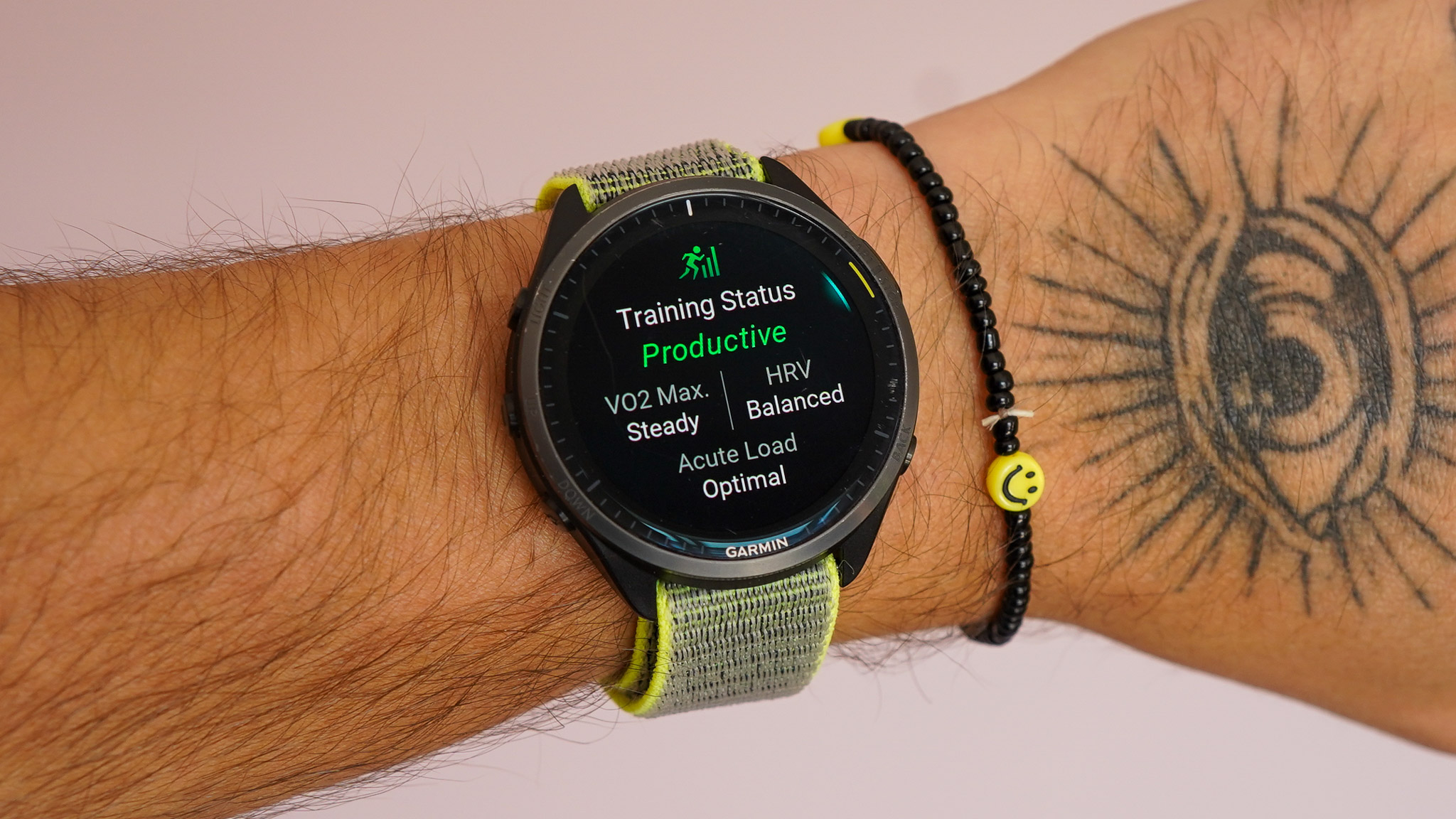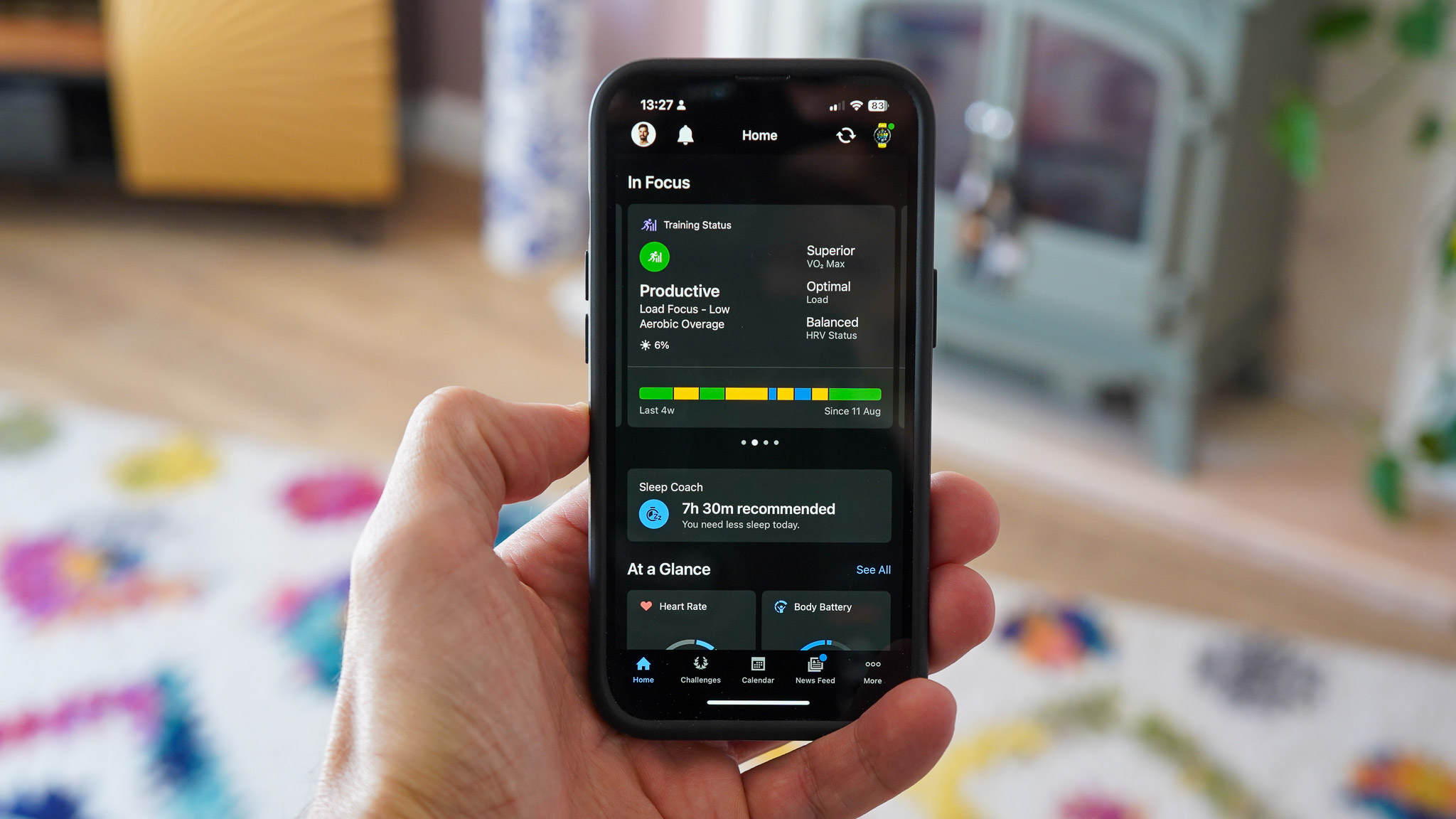How to get Productive Training Status on your Garmin watch
If I can do it, you can do it, too


Among Garmin enthusiasts, it's almost a running joke that your watch rarely declares you’re training productively. More often than not, it labels your efforts as unproductive or overreaching. Is it truly possible to achieve the coveted Productive Training Status, or should you accept that your running watch might always set the bar just out of reach?
Nearly all of the best Garmin watches, whether you're eyeing the best running watch or the best triathlon watch, offer a Training Status feature. This feature, as Garmin describes, provides a “unique multidimensional analysis [that] connects the dots between how you train and the results you get.”
Having trained with Garmin watches for years, I’m currently preparing for the New Forest Half Marathon, followed by the Loch Ness Marathon, utilising the Garmin Daily Workout Suggestions (DWS) feature on my Garmin Forerunner 965. These suggestions are tailored to your fitness level, training load, and recovery needs, even considering upcoming races if you’ve set them up using the Race Day Widget.
Why do I emphasise DWS instead of Training Status? Because the key to unlocking the Productive status lies in training in a way that your watch comprehends. While not without its flaws, DWS bases its recommendations on your unique metrics, ultimately aiming to make you a more efficient runner.
The workouts it suggests are designed to enhance your speed and resilience. However, many runners overlook these recommendations, often pushing themselves too hard and too long, which can compromise both fitness and overall health.

DWS can guide you through this. Although its suggestions are typically conservative—and it seldom recommends truly long runs, which is unfortunate—it provides the variety and pace guidance that many runners would benefit from embracing. Additionally, DWS will recommend more than just steady-pace runs, sparing you the hassle of setting up these varied sessions manually.
Recovery, particularly sleep and heart rate variability (HRV), is another major factor in your Training Status score. Regardless of how well you train, without proper recovery, your Training Status is unlikely to reach Productive. This is especially pertinent for those labeled as Unproductive. According to Garmin, this status indicates that “Your fitness [is] declining but not necessarily because of excessive training loads. If your load focus is optimally balanced, it may be time to evaluate other factors like nutrition, daily stress, and sleep quality.”
Get all the latest news, reviews, deals and buying guides on gorgeous tech, home and active products from the T3 experts
Stress, and how effectively you recover from it, also plays a significant role. Many Garmin users wear their watches throughout the day to capture the most accurate data, only to discover how much stress they accumulate—myself included, especially during office hours. Yet, few take actionable steps to manage this stress or improve their sleep, leaving their bodies in a constant state of tension.
Lastly, Training Status also considers acute load, making it crucial to manage your training load effectively if you aim to achieve Productive status. Runners often fluctuate between low and high mileage weeks, assuming their bodies are always primed for exertion.
To consistently reach Positive Training Status on your Garmin watch, balancing training load with recovery is essential—both easier and harder than it sounds. My primary focus is always on prioritizing recovery, particularly sleep. Maintaining a steady sleep routine does wonders not just for your Training Status, but for your overall health. I make it a point to read before bed, avoid late-day exercise, and steer clear of stimulants like black tea and coffee after midday.
When running, I always start with the Daily Workout Suggestions, even for long runs. This helps me avoid rushing through the early stages, which pays off later in the workout. If there’s a period where I run less, I don’t immediately jump back into high-mileage sessions. Instead, I gradually increase the distance over a few weeks, allowing my body to adjust.
Cross-training is invaluable. Keep an eye on your training load, and if you’re approaching the upper limits with a long run planned for the weekend, consider swimming, cycling, or strength training instead of another mid-week run.
Most importantly, apply common sense. If your knee hurts or you’re struggling to sleep, pushing yourself further won’t help. If your Garmin labels you as unproductive, don’t immediately scrutinize your training; instead, assess your sleep and recovery first.
Read more about the Training Status feature at Garmin and check out the best Garmin Watch deals – it's up to you.

Matt Kollat is a journalist and content creator who works for T3.com and its magazine counterpart as an Active Editor. His areas of expertise include wearables, drones, fitness equipment, nutrition and outdoor gear. He joined T3 in 2019. His byline appears in several publications, including Techradar and Fit&Well, and more. Matt also collaborated with other content creators (e.g. Garage Gym Reviews) and judged many awards, such as the European Specialist Sports Nutrition Alliance's ESSNawards. When he isn't working out, running or cycling, you'll find him roaming the countryside and trying out new podcasting and content creation equipment.